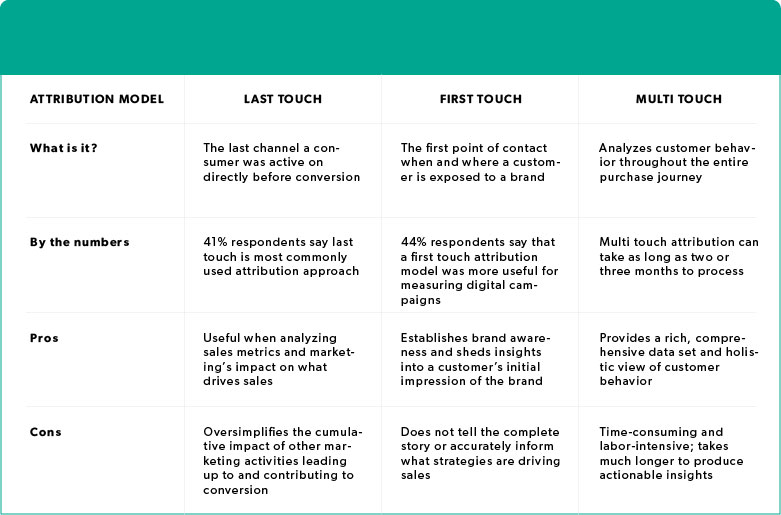Analyzing attribution: Effectively measuring marketing in the digital world

by Toby McKenna, executive vice president of global advertising at Bazaarvoice
Today’s marketers have access to an unprecedented amount of technologies, tools and data, giving them the ability to execute increasingly sophisticated campaigns, better report the ROI of their efforts and inform future marketing plans. However, with an abundance of data, platforms and channels being used, it’s hard to isolate the best marketing metrics and attribution models to prioritize. Business leaders are demanding more of their marketing teams, challenging them with proving the ROI of their digital campaigns and linking metrics back to meaningful business results.
Facing increasing pressures to deliver the most accurate and appropriate metrics, digital marketers must understand how to measure and report on customer behaviors. This is a complicated problem given consumers’ non-linear and complex paths to purchase and the multitude of channels and platforms that are available to digital marketers today.
To uncover varying industry perspectives and expectations around attribution, we surveyed nearly 250 professionals representing brands, agencies and publishers. Here’s what we found:
Understanding and evaluating different attribution models
Before diving into which attribution models are the best, it’s important to first understand the different types being used today. According to the survey results, 63% of respondents said the ideal attribution model would be able to track customers throughout the entire marketing funnel—something which is close to impossible to achieve. Most marketers use either a last touch, first touch or multi touch attribution model to measure their campaign activities, with advantages and disadvantages to each process.

Offline metrics in the digital environment
All three of the above digital attribution models are being used by today’s marketers, but brands must not neglect the vital role offline data plays in attribution. In fact, only 1% of survey respondents stated that offline attribution was not important to them. Collected from non-digital sources—typically at the point of sale—offline data can portray a customer’s fluid journey between the digital and physical environments.
In the offline realm, brands can collect valuable customer data like names, contact information and even demographic information, enabling brands to serve highly targeted advertising and personalized messaging to certain customers. When brands combine their offline data with their online marketing activities they’re able to see what types of customers are consuming their digital ads, which messages they’re receptive to and, ultimately, whether or not they resulted in conversion.
Selecting the right KPIs
With multiple attribution models, sources of data and ways that marketers are tracking the efficacy of their campaigns, it can be difficult for brands to know which model or combination of models are appropriate.
More than half of marketers (52%) said that sales metrics such as conversion rates and return on ad spend (ROAS) were the most effective when evaluating campaign success. Traffic metrics like click-through rates, average time spent on page and unique visitors came in second at 36%. Interestingly, only 17% of marketers want their brand and agency partners to put a stronger focus on sales metrics, while 50% of marketers want their partners to focus more on traffic-related metrics.
The industry may disagree about the best marketing metrics to use, but ultimately, selecting the right metrics comes down to identifying the goals of the campaign. For example, if a brand is trying to build brand awareness, traffic metrics and first-touch attribution models can isolate the moments when customers first interact with the brand. Conversely, brands who want to drive concrete sales should consider returns on ad spend and last touch attribution models to determine which ads impacted conversions and overall ROI.
After pinpointing campaign goals and the most appropriate KPIs, it’s equally important for brands to communicate these goals with their agency and brand partners. Almost 40% of brands feel as though their agency and brand partners aren’t aligned on delivering consistent or accurate metrics, demonstrating a considerable need for clearly defining marketing KPIs at the beginning.
In order to effectively show marketing results and their influence on business outcomes, brands must thoroughly understand and evaluate the different types of attribution models, establish distinct marketing objectives and openly communicate campaign goals and KPIs with their agencies and brand partners. There’s no singular solution for measuring marketing success, but mapping different metrics and attribution models to clearly defined campaign goals will maximize the value of marketing activities and spend. To learn more about different digital attribution models and how brands, agencies and publishers are using them, view the full report here.
More from Digiday

What does the Omnicom-IPG deal mean for marketing pitches and reviews?
Pitch consultants predict how the potential holdco acquisition could impact media and creative reviews heading into the new year.

AdTechChat organizers manage grievances amid fallout of controversial Xmas party
Community organizers voice regret over divisive entertainment act at London-hosted industry party, which tops a list of grievances.

X tries to win back advertisers with self-reported video stats
Is X’s big bet on video real growth or just a number’s game?





